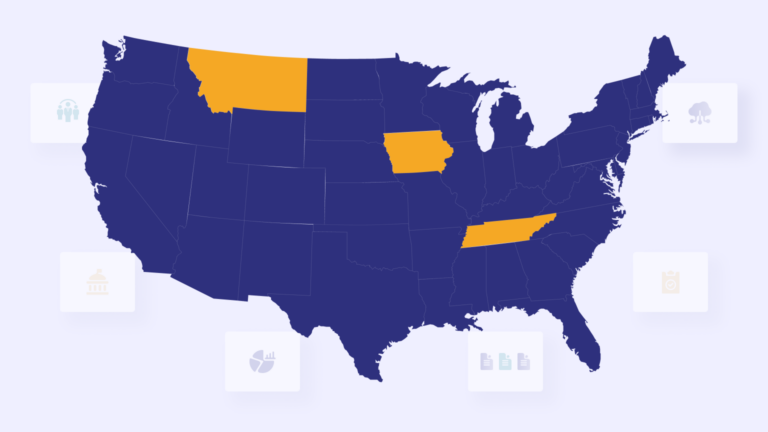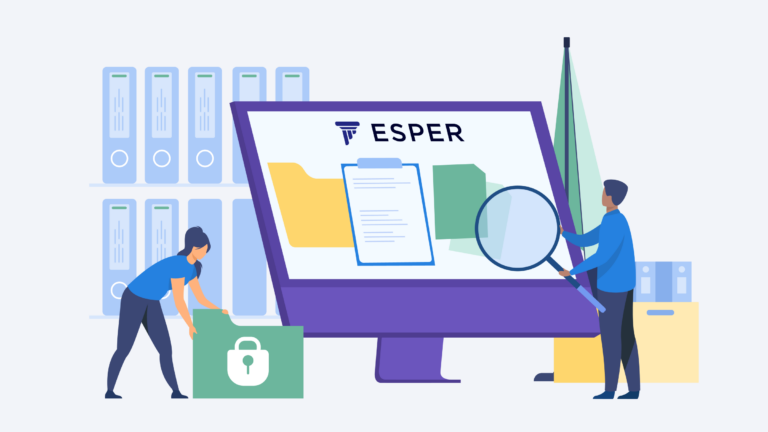
The benefits of SaaS over homegrown systems
Government is shifting from on-prem into the cloud. Check out the benefits of a SaaS policy management solution.
3 minute read
Modernizing legacy systems and moving to cloud-based software-as-a-service (SaaS) technologies is ubiquitous across industries, and government is no exception. But, it’s important to evaluate your organization’s unique needs as you consider SaaS options. As a cloud-based SaaS company, we’ve seen our fair share of homegrown systems, often built out of frustration with existing tools in the marketplace. In this brochure, we outline the benefits SaaS can bring to your organization to support your IT modernization strategy.
First, a quick primer on SaaS. Software-as-a-Service or “SaaS” means you pay a licensing fee to use software developed outside of your organization. The SaaS company is responsible for delivering the agreed-upon technology (usually defined in a Statement of Work), training and set up, any custom work, and the ongoing maintenance of that software.
Commercially available SaaS solutions offer agility, security, compliance, mobility, and reduce the dependence on IT and developers. SaaS technology also provides organizations with new features and functionality on a regular cadence, enabling organizations to stay up to date with industry best practices in software.
Some organizations choose to build their systems in-house in an attempt to control the configuration and keep costs low. Unfortunately, most homegrown systems quickly become outdated “legacy” systems due to ongoing, difficult maintenance requirements and a lack of IT resources necessary for upkeep. While legacy systems may “get the job done,” they almost always lack the latest features and functionality offered by modern SaaS companies.
Other challenges with homegrown systems that must be considered are governance, compliance, calendars, market factors, workflow, approval notification, delegation, access rights, user groups, integrations, and system performance – just to name a few.
Here is a more in-depth look at the benefits of SaaS over homegrown systems.
Prioritize Your Time Wisely
Stay focused on policy, not paperwork. Spend more time researching and evaluating the policy landscape by taking advantage of robust research, collaborative drafting, engagement, and analytic modules built by your SaaS provider. When your team doesn’t need to worry about the technology, you can dedicate more time to subject area expertise.
Free Up Technical Resources
It’s the SaaS provider’s job to keep the platform sound, secure, and release new functionality as your organization evolves. Empower your IT resources to focus on real operational problems, not building and maintaining an ever-changing policy management environment.
Administration and support for homegrown systems are largely dependent on your IT team. Oftentimes, the overall maintenance is strictly dependent on a very small group of engineers who built it, and the turnover rate for these teams can be high. This means institutional knowledge is lost and the administrative overhead of maintaining and updating a homegrown system exponentially grows over time.
Resolve Support Issues Faster
Internal issues can often take a while to resolve with legacy systems, whereas SaaS vendors are required to solve a problem within a specific timeframe. This allows your organization to stay focused on the real policy tasks at hand, not distracting issues with an unknown fix date.
Over time, the legacy system turns into a repetitive, complex headache. Keep in mind that if the programmers who built it leave, the institutional knowledge leaves with them and is lost for those using the system.
Stay Modern And Innovative
To stay ahead of the curve, SaaS organizations continuously innovate – something your organization might not have the time or resources to do. Look for a SaaS provider committed to innovation and ask about their innovation pipeline.
Build a foundation for the future by investing in SaaS technology that allows your organization to scale with the rising demand for modern, collaborative workflows and tools.
Save Money In The Long Run
SaaS technology comes with annual costs, but the long-term cost savings are worth it. Not having to staff, build, fix, and maintain an internal system always pays off.
Depending on the workflows, complexities, number of users, etc., homegrown systems can have large upfront costs. Besides the infrastructure such as the hardware, software operating system, runtime environments, backup, storage costs, and constant upgrades, they also require a lot of builds and test effort compared to cloud-based technologies.
Over time, SaaS technology for the policy lifecycle can keep costs down and increase ROI. Incorporating SaaS into your modernization strategy helps you focus on your most important tasks at hand, and allows SaaS providers to empower you in your role.


